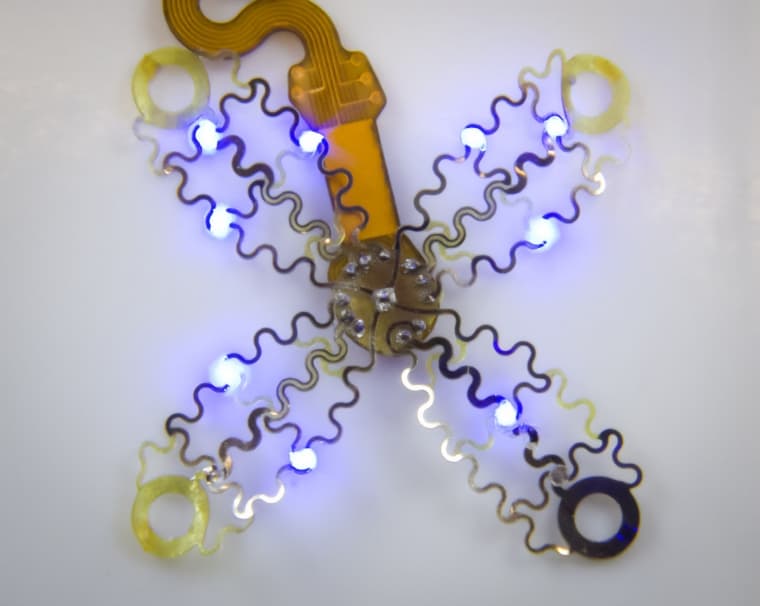Ordinarily, pacemakers correct irregular heartbeats by delivering an electric shock to the entire heart – which can be painful. An experimental new one takes a different approach, and it does so by encompassing the heart with light-emitting “petals.”
In a conventional pacemaker, one or two electrical leads are surgically anchored into the heart muscle. Whenever sensors within those leads detect an irregularity in the heartbeat, they respond by delivering a corrective electric shock. Unfortunately, that shock stimulates not only the muscle, but also the heart’s pain receptors.
Building upon previous research, a University of Arizona/Northwestern University team led by U Arizona’s Asst. Prof. Philipp Gutruf set out to develop a less painful alternative. The resulting prototype consists of four flexible, petal-like, thin-film structures, which envelop the heart from below “like a flower closing up at night.”
Utilizing a technique known as optogenetics, tiny blue LEDs within the petals switch on as needed to stimulate modified cells called cardiomyocytes – these trigger contractions of the heart muscle. Importantly, only the cardiomyocytes are affected, leaving the pain receptors unstimulated.
As an added bonus, because the optogenetic pacemaker uses LEDs to stimulate the cells but uses electrodes to monitor the heartbeat, it can perform both functions simultaneously – traditional pacemakers have to switch between doing one or the other. Additionally, no parts of the new device are actually placed within the heart itself, so its implantation is considerably less invasive.

Philipp Gutruff
Another problem with traditional pacemakers lies in the fact that they’re powered by batteries, which have to be surgically replaced when they start getting low. That wouldn’t be an issue with the optogenetic pacemaker, as it’s wirelessly powered via resonant coupling technology. Gutruf tells us that patients would have to remain in close proximity to an external resonating device, which could either be worn on the body or embedded in items such as mattresses or chairs.
The pacemaker has already been successfully tested on mice, but has yet to be trialled on humans. It is described in a paper that was recently published in the journal Science Advances.
Source: University of Arizona
Source of Article